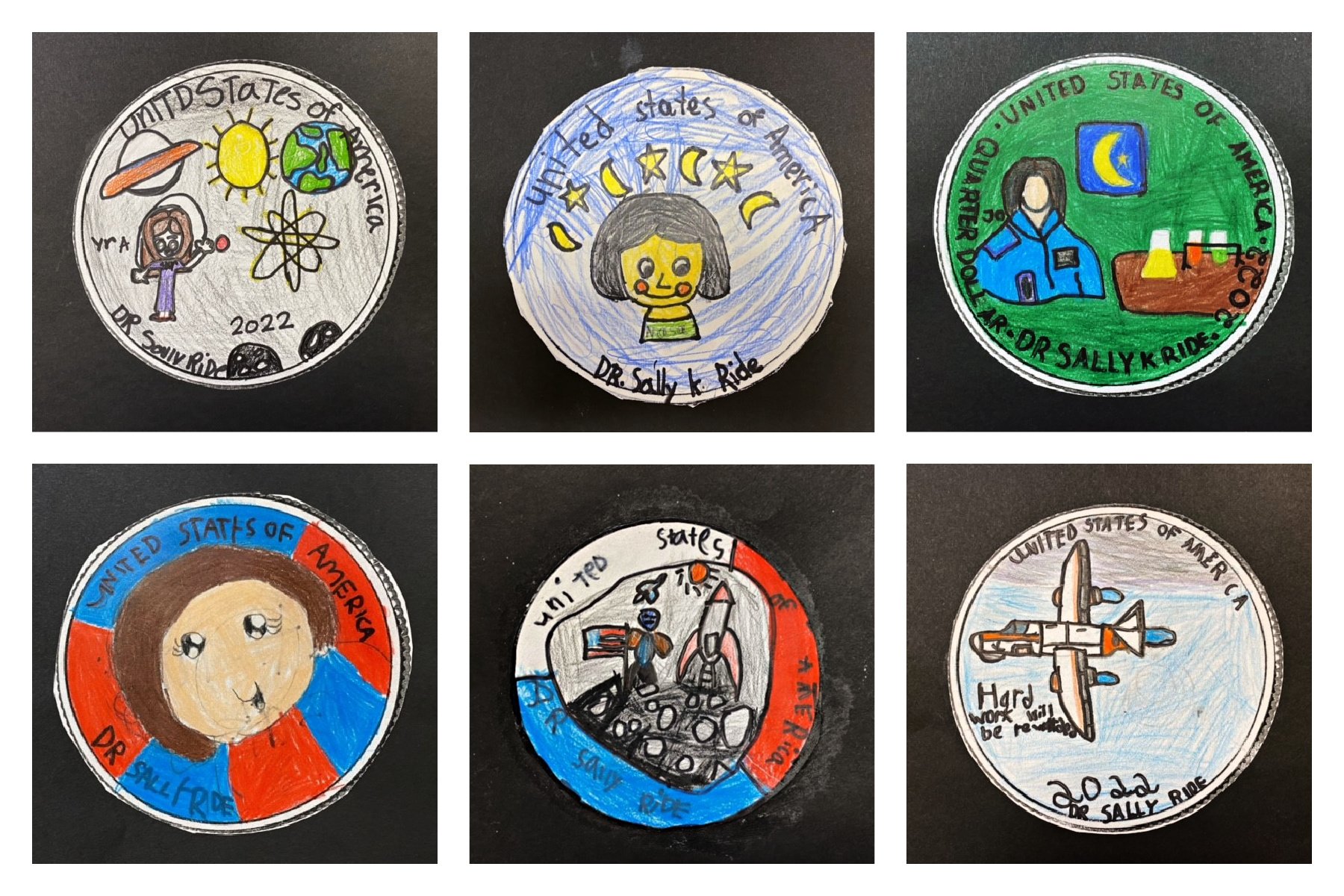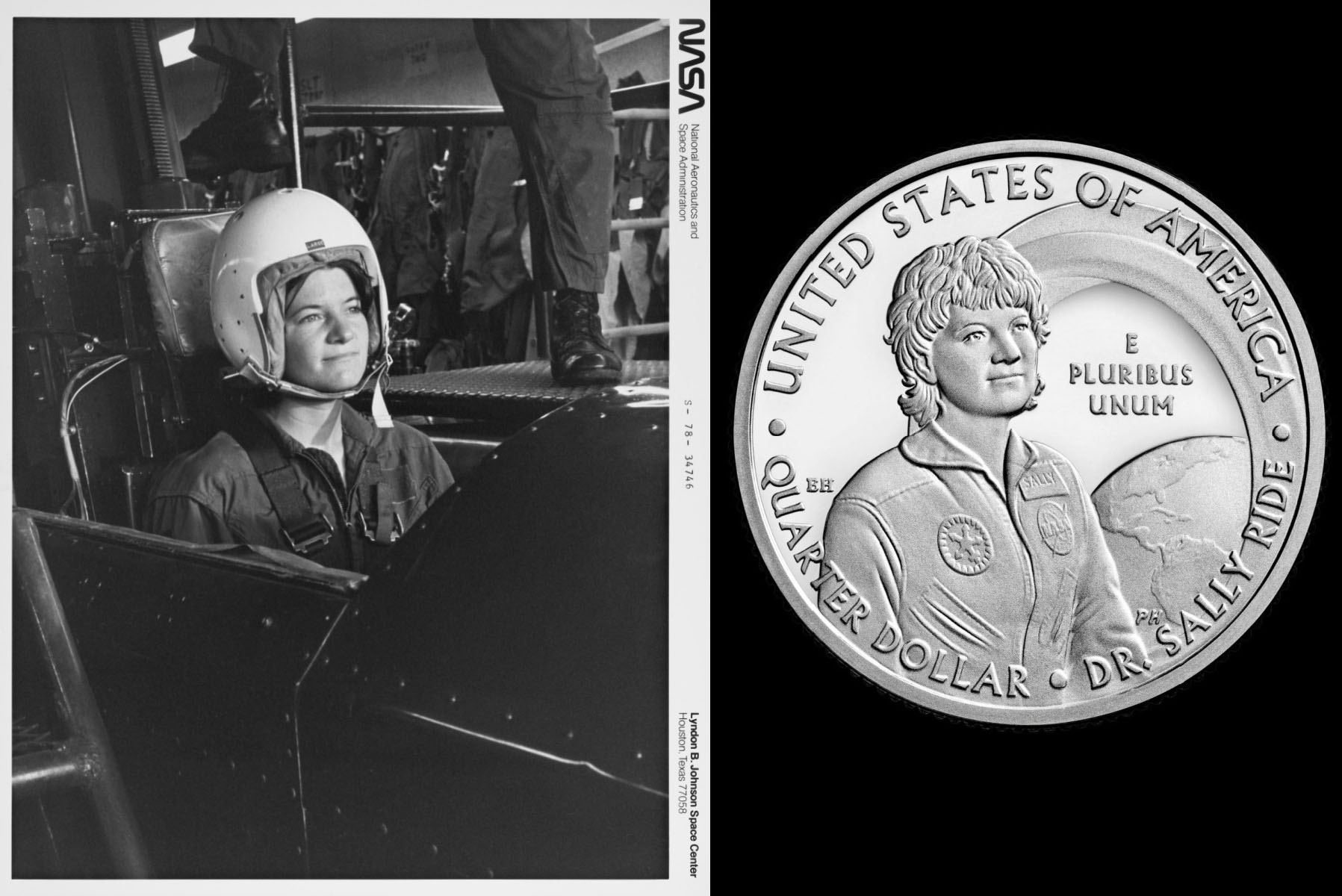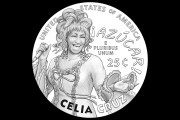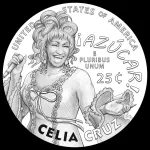For an entire school year, the Dr. Sally K. Ride Elementary School turned into Sally Ride Command Central.
There were Sally Ride coloring books to shade in and Sally Ride books to read and Sally Ride quarters to design. These paper coins would adorn the hallways come April 2022, when representatives of the U.S. Mint arrived in Germantown, Maryland, to celebrate. The first American woman in space was now part of another historic launch: One commemorating women’s achievements on U.S. quarters.
When the Mint’s American Women Quarters program concludes next year, it will have elevated the stories of 20 women from diverse backgrounds whose contributions to U.S. culture have not often been celebrated — or even widely known. Getting women’s portraits onto quarters has been about correcting a history of exclusion, and about making sure their faces are cast next to those of the founding fathers.
“These women just haven’t been seen and their historical moments haven’t been taught,” said Rep. Barbara Lee, the Democrat from California who introduced the legislation that created the program. “Our young people especially will be empowered by their stories.”
At Sally Ride Elementary, educators seized on the opportunity to not just tell their namesake’s story, but to teach children what is possible. Principal Elise Burgess contacted the Mint ahead of the quarter’s release and was gifted boxes of learning materials for the students, who spent the 2021-2022 school year learning about Ride and the coin engraving process. They went on a virtual tour of the Mint facility in Philadelphia and they each designed their own quarter.
Ride’s partner, Tam O’Shaughnessy, spoke at the school once the Mint’s version of the coin went into circulation: It depicts Ride floating next to a window in a space shuttle, the Earth below her. Ride is gazing up at the stars “with passion and purpose,” O’Shaughnessy told the students.
“When you hold a Sally Ride quarter in your hand, look at the image and read the words. I hope they inspire you and give you a sense that you, too, can make a difference,” she said.
Ride was the first known LGBTQ+ astronaut, although her 27-year relationship with O’Shaughnessy wasn’t publicly acknowledged until after Ride’s death in 2012. O’Shaughnessy’s talk – and ongoing correspondence with students who write to her – gave the school an opportunity to elevate LGBTQ+ stories “in a really celebratory way,” Burgess said.
At the end of the year, every student got their own Sally Ride quarter, and two years later, the school’s hallways are still adorned with giant versions of it. “Now we’re all about women’s history all the time,” Burgess said.

This was exactly the kind of shift Lee envisioned in 2017, when she started pushing for her legislation with the help of Rosa Rios, then the treasurer of the United States. The centennial of the 19th Amendment was approaching in 2020, and Lee believed it was important to create a program that centered the women of color who had been omitted by the amendment’s passage. Although White women got the vote in 1920, women of color would not get full access to the ballot until 1965.
Getting the bill through Congress meant overcoming “major hurdles, like there are major hurdles for women on all fronts,” Lee said. But it finally passed the year of the centennial, with the first quarter to enter circulation honoring poet and civil rights activist Maya Angelou. “And still we rise,” said Lee, echoing Angelou’s famous poem.
The Mint worked with the National Women’s History Museum and the Smithsonian American Women’s History Museum to choose the 20 women who would be featured. Jennifer Herrera, the vice president of external affairs at the women’s history museum, said the focus was diversity — in terms of race, geography, age, and work. They let the public nominate women, and more than 11,000 submissions came in.
Some were big names, Herrera said, but people also nominated the women in their own lives. “There was a general sentiment that, ‘My mother has always been an inspiration to me,’ or, ‘My grandmother raised me,’ or, ‘My aunt is an educator and I love watching her change the world through education,’” Herrera said. “Whenever there is an opportunity for women to lift other women up, they take it.”
Among those chosen: Hawaiian composer Edith Kanakaʻole, investigative journalist Ida B. Wells, Chinese-American film star Anna May Wong, writer Zitkala-Ša and disability rights activist Stacey Park Milbern.
In designing quarters for the Cuban-American singer Celia Cruz and Civil War surgeon Dr. Mary Edwards Walker, metallic artist Phebe Hemphill said she tried to capture the essence of each woman. She depicted Cruz in her famous rumba dress to reflect “her greatness and vitality,” and portrayed Walker wearing the Medal of Honor, the highest military honor for valor in the line of duty, which she wore for the rest of her life. Walker was awarded the medal in 1865, but stripped of it 1917 because she was not a commissioned officer, though surgeons who were men did not lose their medals. In 1977, the medal was restored in Edwards’ name and she remains the only woman to have received it.
-
Read Next:
All of the new quarters feature a portrait of George Washington on the flip side, but it’s not one you’re used to. It’s a design from 1932 that was created by sculptor Laura Gardin Fraser, but not used. (It perhaps goes without saying that for the original quarters, a man’s design was chosen instead.)
The program has also been an effort to enhance women’s history education across the country. At the Smithsonian, for example, interim director Melanie Adams said the museum has created a new web page with resources to help teachers tailor lessons for different age groups. Herrera said that she’s been approached at events by educators who are excited to have another way to teach women’s history.
But all of these efforts come at a fraught time in American education, when efforts to ban teaching critical race theory and LGBTQ+ stories have limited what teachers can present to students.
“We are going to have to be creative in the ways that we get this information out,” said Christian F. Nunes, the president of the National Organization for Women (NOW). “This is American history, but we are having to deal with states that are trying to eliminate American history.”
Nunes was recently at an event commemorating the newest coin to enter circulation: It honors the Rev. Dr. Pauli Murray, an LGBTQ+ poet, writer, activist and lawyer who was also the first Black woman ordained as an Episcopal priest and one of the co-founders of NOW. The word “hope” is sculpted across the quarter, with Murray’s face inside the letters. (Murray used he and she pronouns, but was primarily using she pronouns later in life.)
Nunes said as a Black woman, it was very emotional for her to see the coin in real life. “I just never thought I would ever see a Black woman’s face on a quarter,” she said.
As soon as she got home that day, Nunes showed the coin to her 4-year-old son. “When he grows up,” she said, “he will think nothing else than to expect a Black woman’s face on the quarter.”






